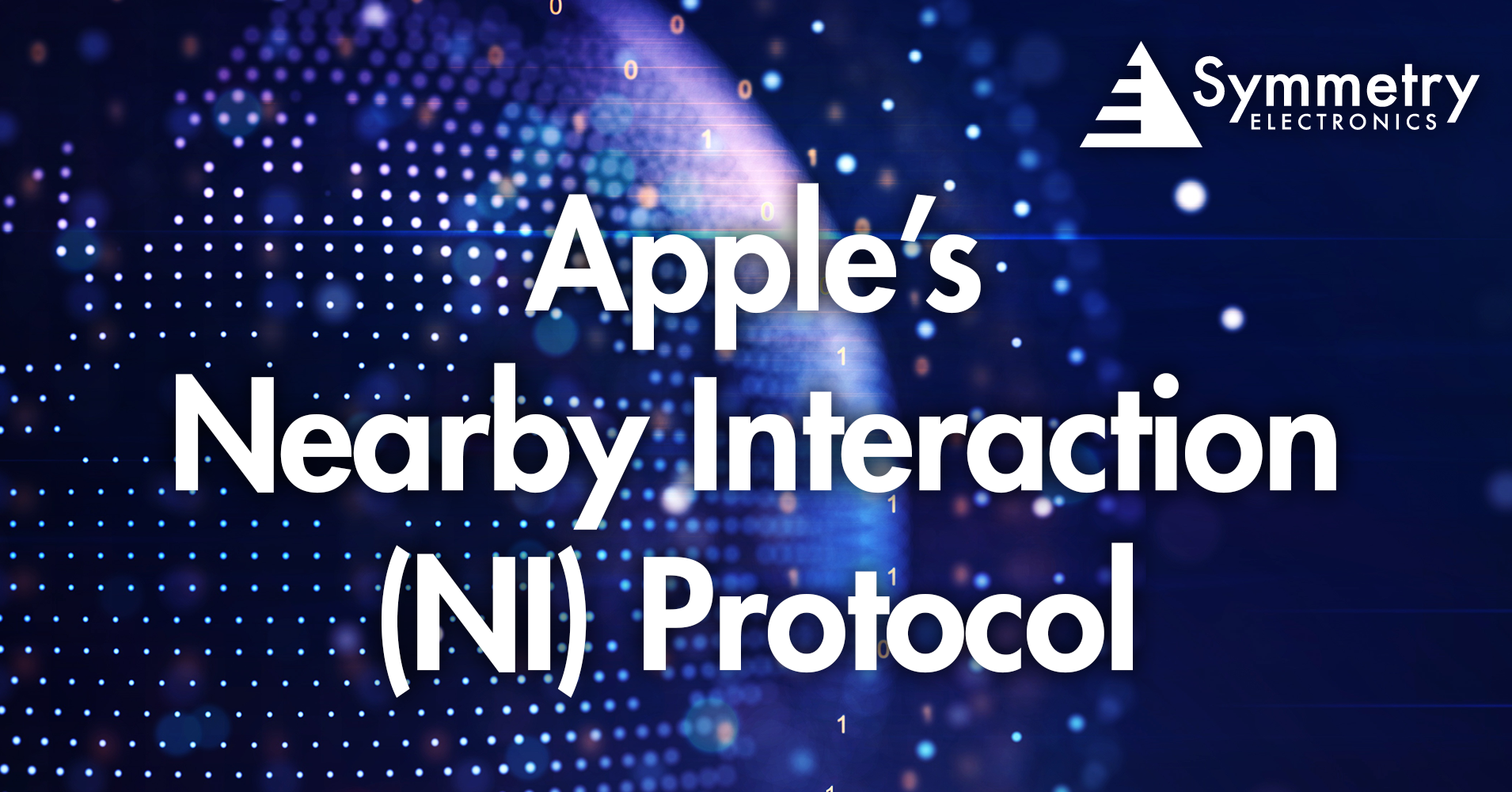- Home
- Symmetry Blog
- Apple’s Nearby Interaction (NI) Protocol
Apple’s Nearby Interaction (NI) Protocol
About Ray Pan

Apple’s Nearby Interaction (NI) feature is a framework that allows your application to acquire a device’s position through Apple’s U1 Chip or third-party accessories with ultra-wideband (UWB) capability. The U1 Ultra-wideband Chip was introduced in iPhone 11’s Airdrop application. Third-party UWB enabled accessories are supported in iOS 15 or later. The NI framework allows those devices in close physical proximity to interact with each other and share locations. Each interacting session carries a unique token that will generate direction and distance for a companion device to create spatial awareness.
NINearbyAccessoryConfiguration’s framework creates a classification for third-party accessory developers to follow. This configuration enables interaction between iPhones and third-party accessories. The interaction starts with discovering the device over a data link, and the developer has the option to choose the connectivity over UWB, Bluetooth, or a local network. The configuration data is prepared according to the UWB Third-Party Device Specification (Release R1) format and exchanged over the data link of choice. From there, two devices can start a ranging session for location data.
Apple has released their sample code for implementing spatial interactions with third-party accessories as part of WWDC 21 on their developer website. The code is compatible with iPhone 11, iPhone 12, and Apple Watch watchOS 8 models. The sample code can be built and deployed to iPhones through MacOS’ integrated development environment, XCODE. The built-in NIAccessory application will scan for accessories in the vicinity that are compliant with third-party device specifications and, with user permission, start NI sessions to acquire location data. The resulting location information is provided in a 2D plane that displays the distance between devices. Developers are working to establish sophisticated 3D location information that would provide distance, elevation, and azimuth details. Qorvo, one of the leading UWB chip suppliers, has recently released the Qorvo NI 3D Demo for Apple U1 compatible DW3000 family solutions. The 3D demo meets third-party specifications for Apple and any developer that is interested in exploring the feature.
Apple’s adoption of UWB and the release of their NI protocol offer applications precise real-time location technology and convenient access from contributing mobile platforms. UWB-enabled location tracking has the potential to enhance the way we address consumer needs and industrial productivity. It is only a matter of time before UWB-based location systems become mainstream.
